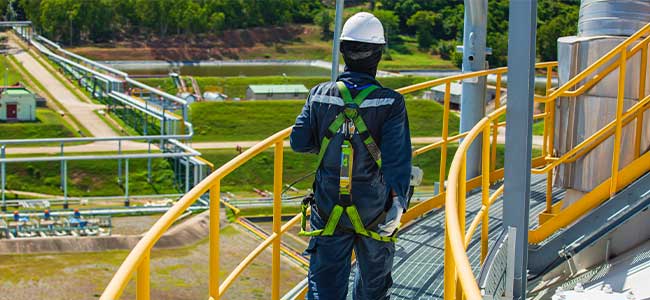Growing Trends for Lone Worker Safety This Summer
Here are the latest trends to look out for this summer regarding lone worker safety.
Working in the heat is dangerous. Not only can it be fatal, but occupational heat can be a somewhat complex hazard, impacting people of different degrees of fitness who may or may not be hydrated enough while performing various jobs during the hot summer months. This risk and danger for the employee is compounded if they are working alone in environments where a helping hand is not easily accessible if they urgently need it in an accident or emergency.
Working Alone in the Heat
When working in high temperatures, employees are at risk of occupational heat stress which, according to OSHA, has four key contributing factors such as environmental conditions, level of physical activity, use of protective clothing and gear, and the unique, personal risk factors of the individual worker.
A number of safety steps can be taken to work in hot environments safely like implementing a thermal alert curriculum or a buddy system to monitor heat tolerance. However, performing their jobs alone will add additional risks and challenges, resulting in a more dangerous and unpredictable work environment. Heat stress can cause painful heat rashes and cramps, and it can cause debilitating heat exhaustion and heat stroke, all illnesses that can lead to unconsciousness and require immediate medical attention.
If working alone, however, the person is at a much greater disadvantage with no coworker nearby to provide that attention if they collapse from the heat and suffer a head injury. Furthermore, without a coworker to remind them, they are also at risk of forgetting proactive safety measures such as regular water and shade breaks from the sun. Lone workers do not have that support.
There are several industries which require their people to work in the sun, heat and sometimes isolation. These include workers in water and electrical utilities, wildlife and conservation, and agriculture in which heat exhaustion and dehydration is a problem and common occupational hazard.
Beyond the Sun
Beyond the scorching rays of the summer sun, people who work alone face a number of occupational hazards that put them at particular risk, including travel accidents to worksites and workplace violence and assault, a major occupational issue garnering deserved attention and safety legislation in the last few years. Most recently, Senate Bill 553 requires California employers to implement a comprehensive workplace violence prevention plan to help protect their employees.







